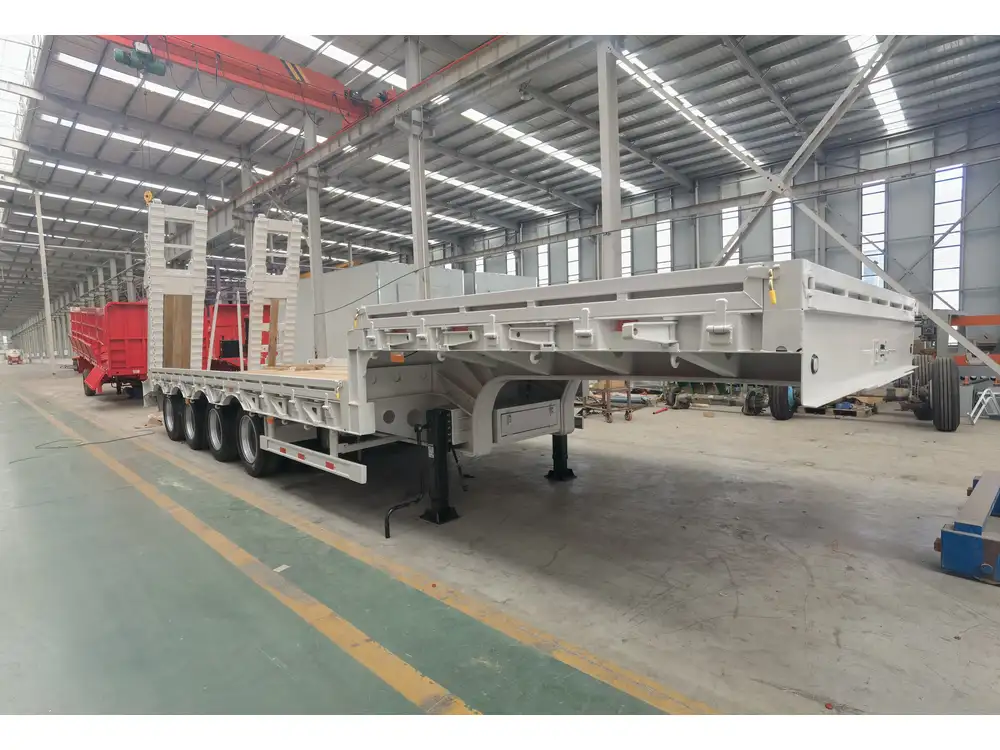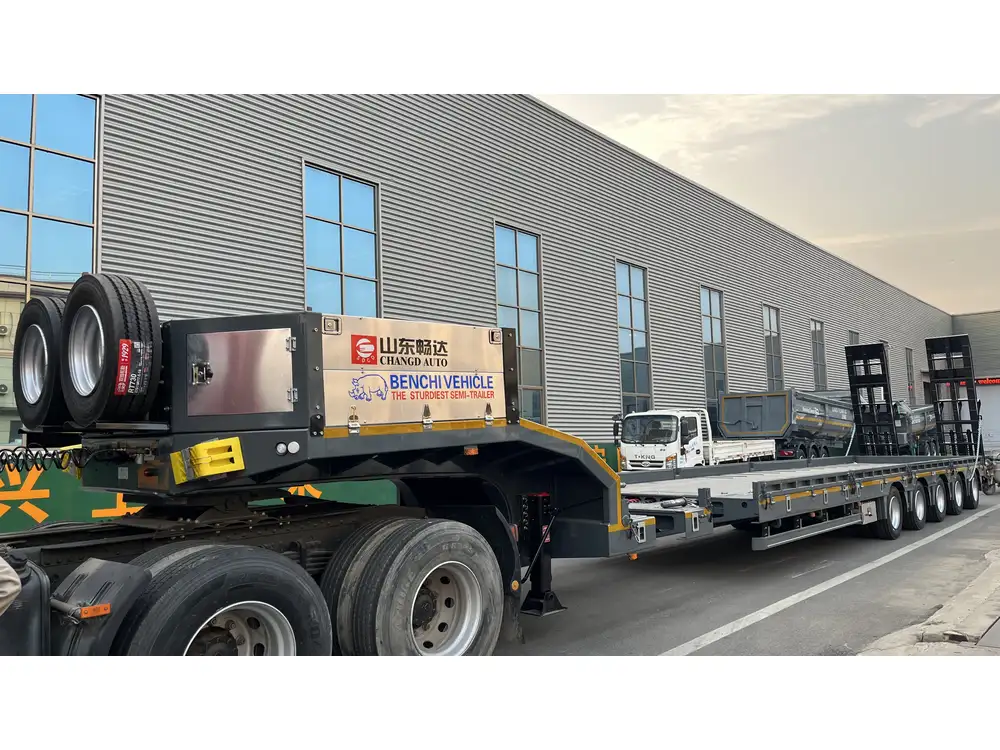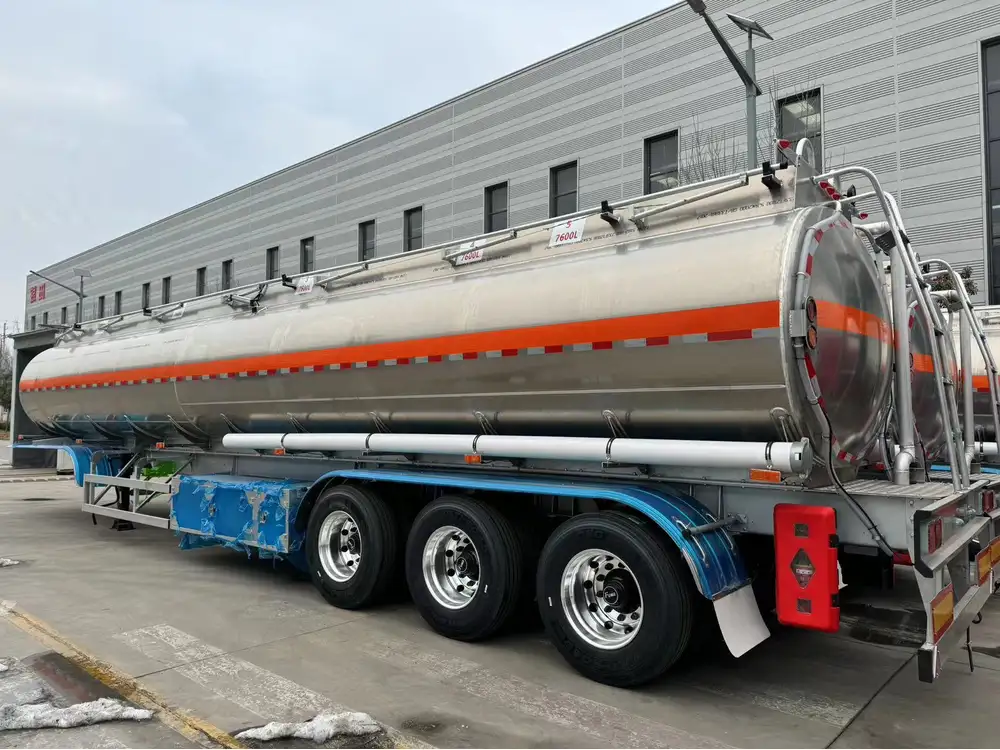When engaging in the logistics and transportation industry, one dominant aspect you must consider is the weight of your transportation equipment, particularly when it comes to flatbed trailers. Understanding the weight of a 30 ft flatbed trailer is crucial for several reasons ranging from compliance with legal weight limits, overall load capacity, and optimal fuel efficiency. In this guide, we delve deeply into the nuances of trailer weights, types of flatbed trailers, their specifications, applications, and considerations for choosing the right trailer for your specific needs.
What is a Flatbed Trailer?
A flatbed trailer is a versatile type of trailer characterized by a flat, level platform with no sides or roof. Its design enables easy loading and unloading of goods, making it an excellent choice for transporting oversized or unconventional cargo. Flatbed trailers come in various lengths, including the popular 30 ft variant, ideal for a wide range of applications including construction, automotive transport, and equipment hauling.
Weight Specifications of 30 ft Flatbed Trailers
The weight of a 30 ft flatbed trailer can vary significantly based on several factors including the construction material, design type, and specific manufacturer specifications. On average, a 30 ft flatbed trailer weighs between 5,000 to 7,000 pounds.
| Trailer Type | Estimated Weight Range |
|---|---|
| Standard Flatbed | 5,000 – 6,000 lbs |
| Heavy-Duty Flatbed | 6,000 – 7,000 lbs |
| Aluminum Flatbed | 4,500 – 5,500 lbs |

Factors Influencing the Weight
Material:
- Steel: Heavier but offers durability for heavy loads.
- Aluminum: Lightweight, improving fuel efficiency but can be less robust for extremely heavy-duty applications.
Design Features:
- Trailers equipped with additional features such as toolboxes, ramps, or specialized equipment attachments tend to weigh more.
Axle Configuration:
- The number of axles installed on the trailer plays a significant role in its overall weight capacity and distribution.
Modifications:
- Customizations to accommodate specific hauling needs can alter the weight of the trailer.
Legal Weight Limits for Trailers
Navigating state regulations is essential when operating trailers. In North America, the Federal Motor Carrier Safety Administration (FMCSA) imposes a legal weight limit of 80,000 pounds for trucks, including the vehicle and trailer combined. However, the specific weight limit for trailers can vary based on state and local regulations. Knowing the weight of your 30 ft flatbed trailer and its cargo is essential to remain compliant and avoid hefty fines.
| Federal Limit | Total Weight Limit |
|---|---|
| Single Axle | 20,000 lbs |
| Tandem Axle | 34,000 lbs |
| Gross Vehicle Weight | 80,000 lbs |
Finding the Right Balance
Understanding your trailer’s weight limits and the payload is critical for safe and efficient transportation. The Payload Capacity of a trailer is calculated by subtracting the trailer’s weight from its total weight limit.

Payload Capacity Calculation
Example: If your 30 ft flatbed trailer weighs 6,000 lbs, and the vehicle has a total weight limit of 80,000 lbs:
Payload Capacity = Total Weight Limit – Trailer Weight
Payload Capacity = 80,000 lbs – 6,000 lbs = 74,000 lbs
This means your trailer can legally carry a maximum payload of 74,000 lbs.
Importance of Proper Load Distribution
Improper load distribution can lead to accidents, trailer sway, and excessive wear on tires and axles. It is recommended to evenly distribute weight across the trailer chassis, ensuring no single point is excessively loaded. Be mindful of how the weight shifts may impact your vehicle’s handling when cornering or during sudden braking.
Best Practices for Transporting
Regular Weight Checks: Maintain accurate records of your trailer and the weight of the loads carried. Digital scales can offer precise weight readings before and after loading.
Inspection: Regularly inspect the trailer for structural integrity and maintenance needs. Look for signs of wear, especially in tires, axles, and coupling devices.
Understand Local Regulations: Different states and municipalities may have unique transportation regulations that affect legality and safety on the road.

Choosing the Right 30 ft Flatbed Trailer
When considering which 30 ft flatbed trailer to purchase or rent, several critical aspects should inform your decision:
1. Intended Use
- Construction: If the trailer will be used to carry heavy construction equipment, a heavy-duty trailer may be necessary.
- Freight Transport: Ensure that the trailer has the appropriate weight capacity to handle typical freight sizes.
2. Material Selection
- Steel vs. Aluminum: Consider the trade-offs between weight, cost, and load-bearing capacity. Aluminum is often recommended for lighter loads due to better fuel efficiency.

3. Axle Configurations
- Single vs. Tandem Axles: Determine how much weight you intend to carry to make an informed choice about axle type, as tandem axles provide better weight distribution and stability.
| Axle Type | Pros | Cons |
|---|---|---|
| Single Axle | Lightweight, cost-effective | Limited payload capacity |
| Tandem Axle | Better weight distribution | Heavier, costlier |
4. Custom Features
- Accessories: Depending on your specific needs, trailers can be equipped with side kits, drop decks, or additional storage solutions. Evaluate whether these features justify the additional weight or cost.
Maintenance of 30 ft Flatbed Trailers
Proper maintenance is crucial for ensuring safety and longevity. Regular inspections should include:
- Tire Pressure: Maintaining proper inflation is vital for fuel efficiency and preventing blowouts.
- Brake Functionality: Regularly test the brakes, ensuring they respond quickly and effectively.
- Light Functionality: Verify all lights are operational, ensuring visibility during twilight or night hauling.
- Structural Inspection: Check for signs of corrosion, particularly if operating in wet or salty environments.

Conclusion
Understanding the weight of a 30 ft flatbed trailer, including factors influencing weight, legal implications, and best practices for safe operation, plays a vital role in successful transportation. The interplay between construction materials, load distributions, and trailer specifications can significantly impact your business’s logistics efficiency and compliance. Equip yourself with the necessary knowledge to choose the best flatbed trailer for your needs, ensuring safety, regulatory compliance, and optimized operational costs. Whether you’re a seasoned professional or a newcomer to the transportation field, this guide serves as a foundational building block for your trailer knowledge.
With a robust grasp of these elements, you are now better prepared to navigate the world of trailer weights, capabilities, and legal requirements. Equip yourself strategically to not just meet but exceed transportation needs in a competitive landscape.



